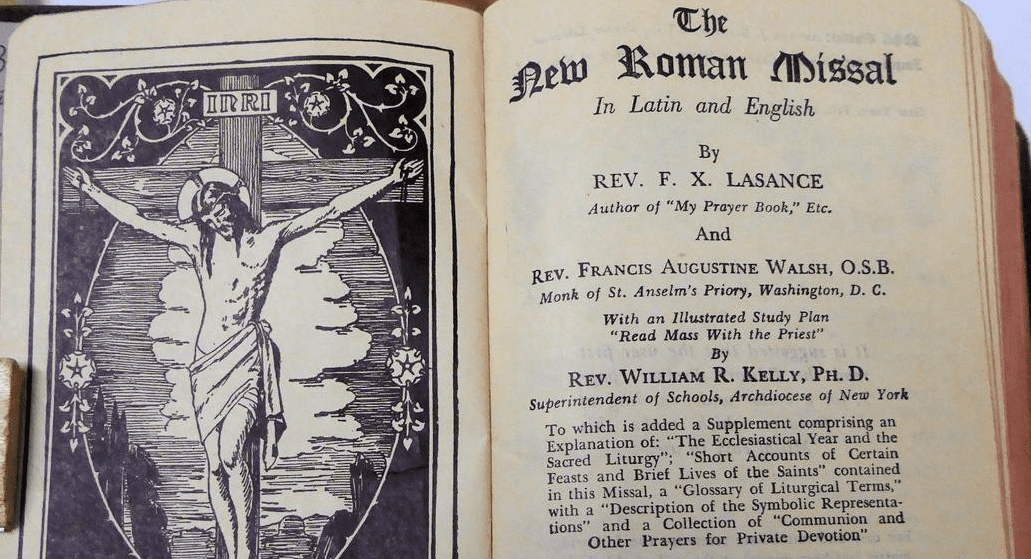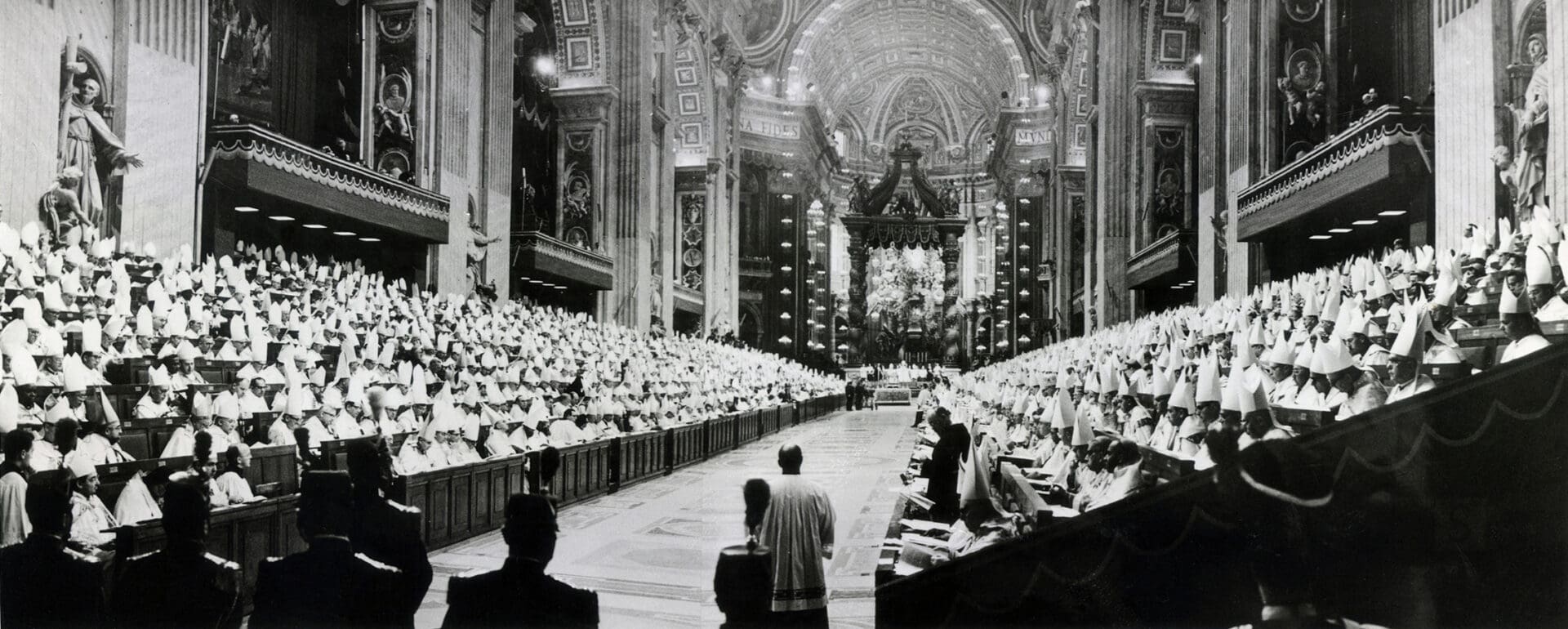Online Edition:
September 2008
Vol. XIV, No. 6
New Mass Translation Accents Reverence and Awe
by Philip Lawler
Imagine that you are a student in an introductory Latin class, and this phrase pops up on a quiz to be translated: totiusque ecclesiae suae sanctae.
Fortunately you’re Catholic, and you have one of those wonderful missals with the English and Latin texts on facing pages. Working easily from memory, you write down your answer: “and all his church”.
Wrong!
Your error is not hard to find, once you look at it. You left out a word.
Look again at the Latin: totiusque ecclesiae suae sanctae. Now look at your answer.
totiusque = and all. Correct
ecclesiae = church. Right.
suae = his. Right again.
But you completely forgot the word sanctae, which of course means “holy”. So your translation was wrong.
More to the point, the translation that English-speaking Catholics have been hearing at Mass for years is also wrong. Not just subtly inaccurate, but downright wrong. A word is missing.
Unlike introductory students, the people who produce official translations of the Roman Missal do not make blunders because they are nervous, or because they are pressing to finish their work before the clock runs out.
These translations are done by learned scholars, working in committees, over a period of years. They are reviewed and re-reviewed by bishops and their consultants. The word “holy” was not dropped from the Latin original, in this instance, because of a careless mistake. The omission was intentional.
The currently authorized English translation of the Missal, you see, was produced by people who thought it was at least unnecessary, and perhaps even undesirable, to identify the Church as “holy” in that particular prayer.
Despite the fact that the Roman Missal is the authorized, normative version of the liturgy for the universal Church, the translators dropped that word “holy” from the English-language translation.
This is not the most important way in which the current English translation varies from the Latin original. But in this case the error is so unmistakable, and the translators’ intent is so clear, that it neatly illustrates the more general problem.
Again and again in the current translation, pious phrases are either omitted or pared down to a minimalist form. Instead of “beseeching” God to accept our sacrifice, we “ask”; rather than asking God to “grant” our petitions, we express the hope that our wishes “may” come to pass.
At its best, this stripped-down approach to translation produces prayers that sound like ordinary, everyday English. At its worst, it almost conveys the impression that we, the faithful, are issuing instructions to the Almighty: telling Him what we expect Him to do.
To me, therefore, it was exciting to learn that the Vatican has given final approval to a new English translation for the Order of the Mass. The new translation is markedly more faithful to the Latin original. It makes much greater use of an elevated liturgical language, and revives those “prayers of supplication” that have been downplayed in English-language liturgical translations for years. This is not just a big story; it is a huge story, and cause for great rejoicing.
Now understand that the change will not be evident immediately. The new translation will not be put into use until the US bishops have made appropriate preparations: a process that could take months. And the Vatican approval covers only a translation of the Order of the Mass: the prayers that we hear each day. The translation of the entire Roman Missal, with all its prayers for particular feasts, is still being done. Still, once the first changes are introduced at the parish level, the impact will be considerable.
For the first time in a generation, Catholics worshipping in English-language parishes will be constantly reminded, by the language of the liturgy, that we are participants in a great universal drama that extends far beyond the confines of our own communities.
***
Philip F. Lawler is editor of Catholic World News and a director of Catholic Culture, on whose web site (www.catholicculture.org) this column appeared on August 18, 2008.
***
*


